Contents:
Have you ever stumbled upon an old coin, perhaps tucked away in a dusty jar or nestled within a forgotten family collection? What if that seemingly ordinary 1971 Lincoln Penny in your hand holds a secret worth far more than its face value?
Unlocking a coin's true worth involves a bit of work: a close look at its mint mark, the date it was struck, and any unique characteristics or "mistakes" that make it identify coins in the proper way.
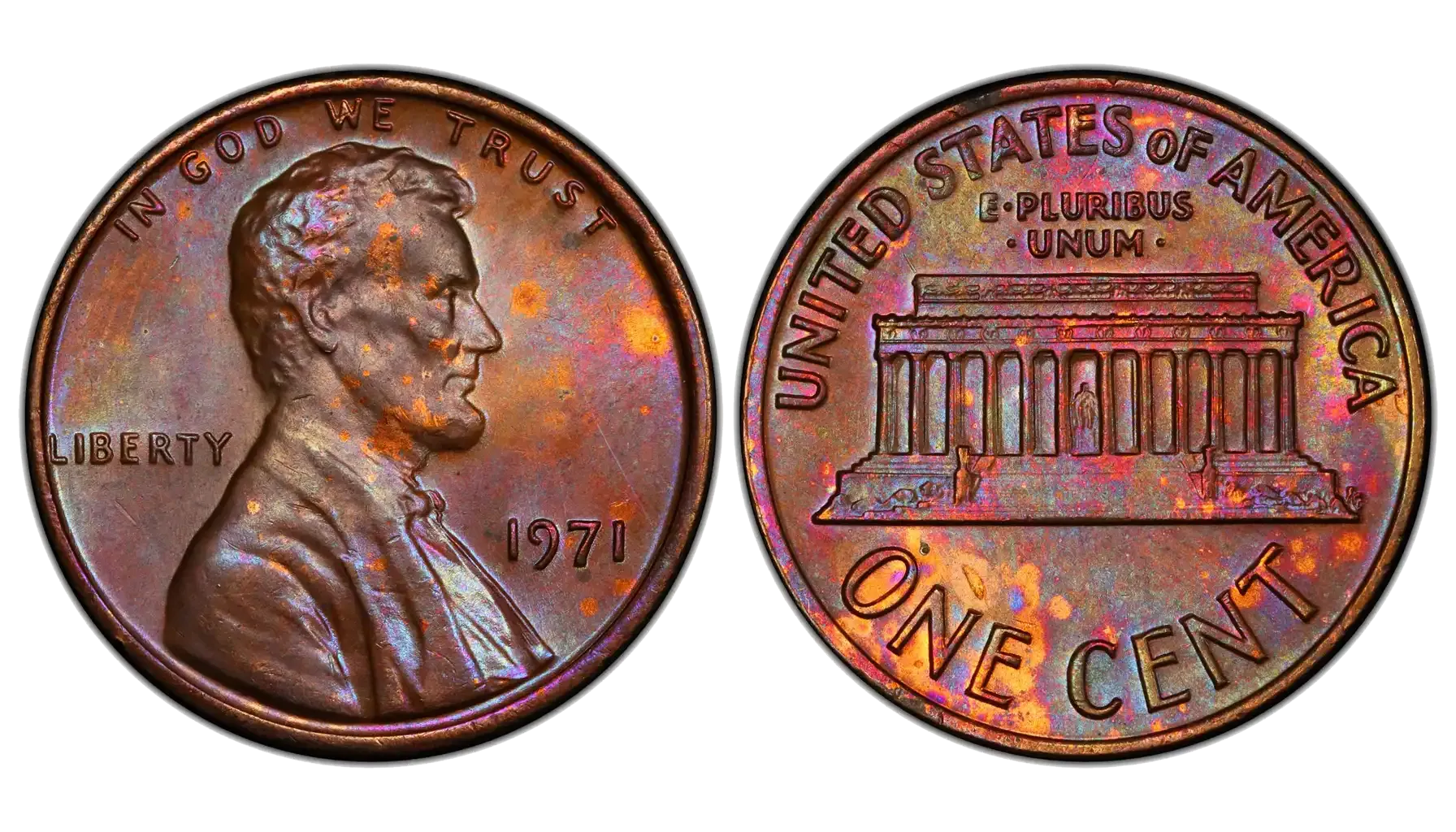
The 1971 Lincoln Cent: A Quick Look
The U.S. Mint made many Lincoln cents in 1971. These coins were for everyday use. But some coins from this year are special. They may have unique types of penny errors.
Where Your Coin Was Made
To find your penny value, first find its mint mark. This small letter is under the date on the front side. It tells you where it was made. This is important for any new penny 1971.
"S" for San Francisco: These pennies came from the San Francisco Mint. They made special proof and regular ones. Proof coins are made with extra care for collectors. San Francisco made fewer coins than other ones like 1971 no mint mark penny. So, some are harder to find.
"D" for Denver: These coins have a "D" mark. They came from the Denver Mint. This mint made many pieces. So, 1971-D cents are common. If you have a 1971 D mint mark penny, it's from Denver. Denver's main goal was to produce money for daily use.
No Mint Mark for Philadelphia: It's from Philadelphia. These are often called a 1971 penny no mint mark. Like Denver tokens, Philadelphia made many. So, they are common. A regular 1971 penny from Philadelphia is usually worth little. It's often just its face value.
Assessing Your 1971 Penny's Worth
The value of a 1971 Lincoln penny can change a lot. It depends on the mint mark, its type, and its condition. Many used coins are worth only a little. But rare types and coins in nice condition can be worth much money.
If you ask, "how much is a 1971 penny worth" the answer depends on these things. For example, it can be different from the 1971 D penny value today.
Name | Estimated Value |
1971 (No Mint Mark) | $0.05 - $10.00 |
1971-D (Denver Mint) | $0.05 - $10.00 |
1971-S (San Francisco) | $0.10 - $25.00 |
1971-S Proof | $1.00 - $50.00+ |
1971 Doubled Die Obverse | $50.00 - $5,000.00+ |
The table shows the 1971 DDO penny is very valuable. It is a great find for collectors. Even a used one can be worth a lot of money.
Special Types and Mistakes of 1971 Lincoln Pennies
Old coins like the 1928 Wheat Penny have special features. For coins from the 1970s, the dates and mistakes make them valuable. Knowing “how much is a 1971 D penny worth” often depends on these.
1971 (No Mint Mark - Philadelphia)
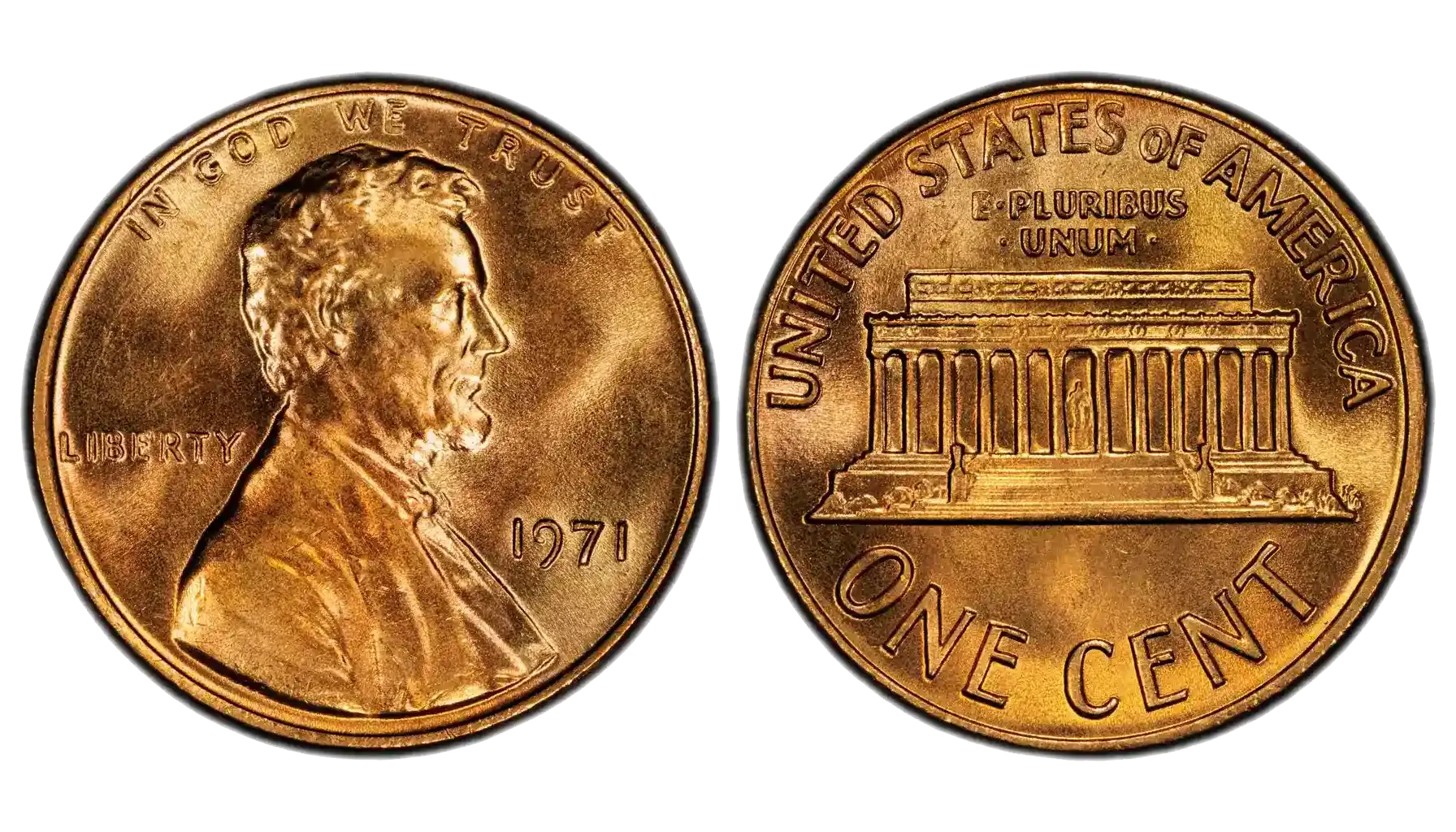
Mintage: 1,919,490,000
Weight: 3.11 grams
Size: 19.00 mm
Material: 95% Copper, 5% Zinc
Highest Auction Price: $4,406.25 (PCGS MS67+RD, 2014). This high price is for a coin in perfect condition with full red color. Most used coins are usually not worth much.
Market Penny 1971 Value
Condition | Estimated Value |
Good (G) | $0.05 - $0.10 |
Fine (F) | $0.10 - $0.25 |
Extremely Fine (XF) | $0.50 - $1.00 |
Uncirculated (MS60-MS64) | $1.00 - $5.00 |
Uncirculated (MS65+) | $5.00 - $10.00 |
1971-D (Denver Mint)
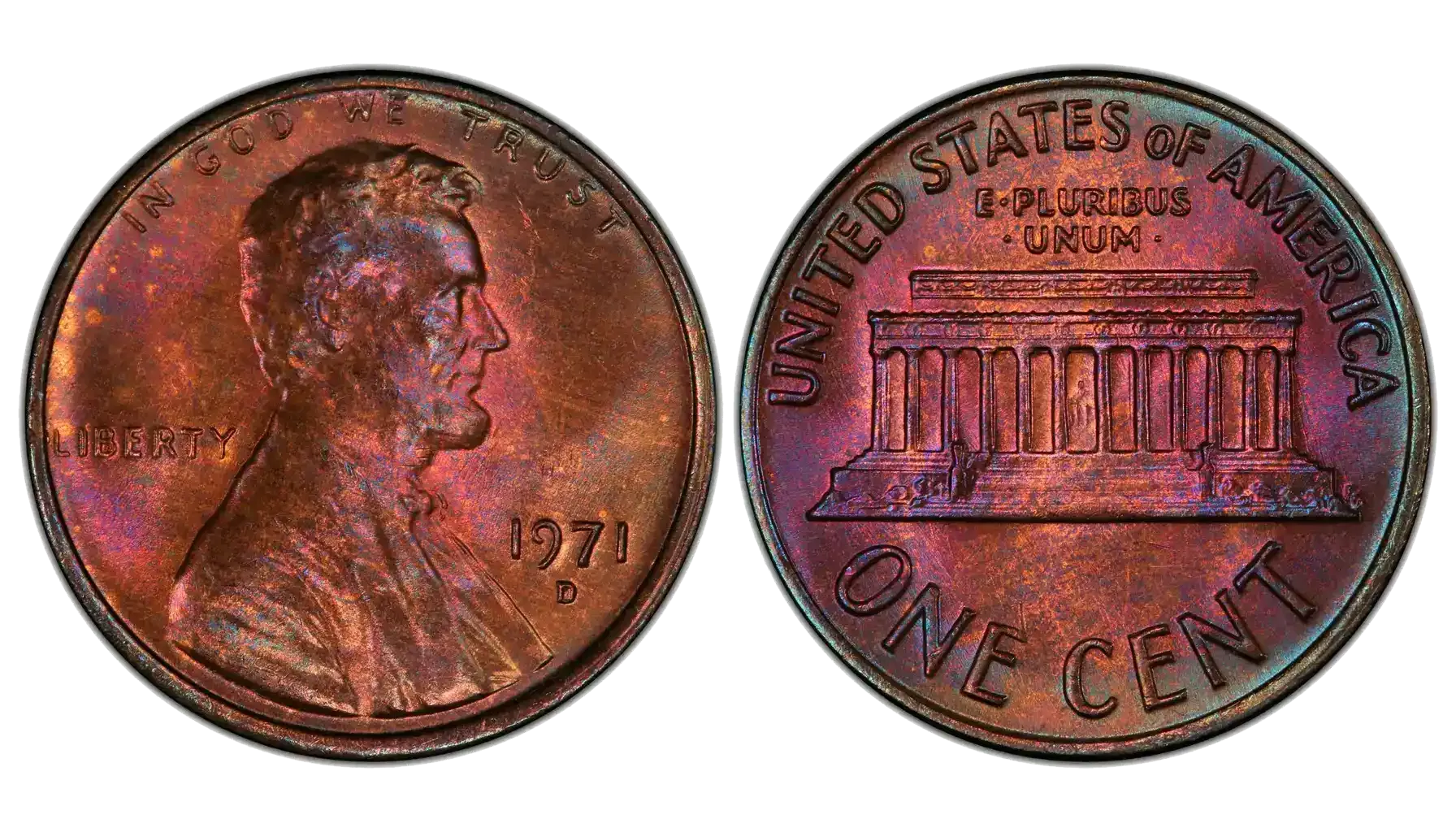
Mintage: 3,161,700,000
Weight: 3.11 grams
Size: 19.00 mm
Material: 95% Copper, 5% Zinc
Highest Auction Price: $1,200 (MS67+RD, 2018). The 1971-D penny is common. This helps decide the 1971 D penny value worth. This coin is also called the 1971 D Lincoln penny. Coins from Denver often have strong strikes.
Market Penny 1971 D Value
Condition | Estimated Value |
Good (G) | $0.05 - $0.10 |
Fine (F) | $0.10 - $0.25 |
Extremely Fine (XF) | $0.50 - $1.00 |
Uncirculated (MS60-MS64) | $1.00 - $5.00 |
Uncirculated (MS65+) | $5.00 - $10.00 |
1971-S (San Francisco)
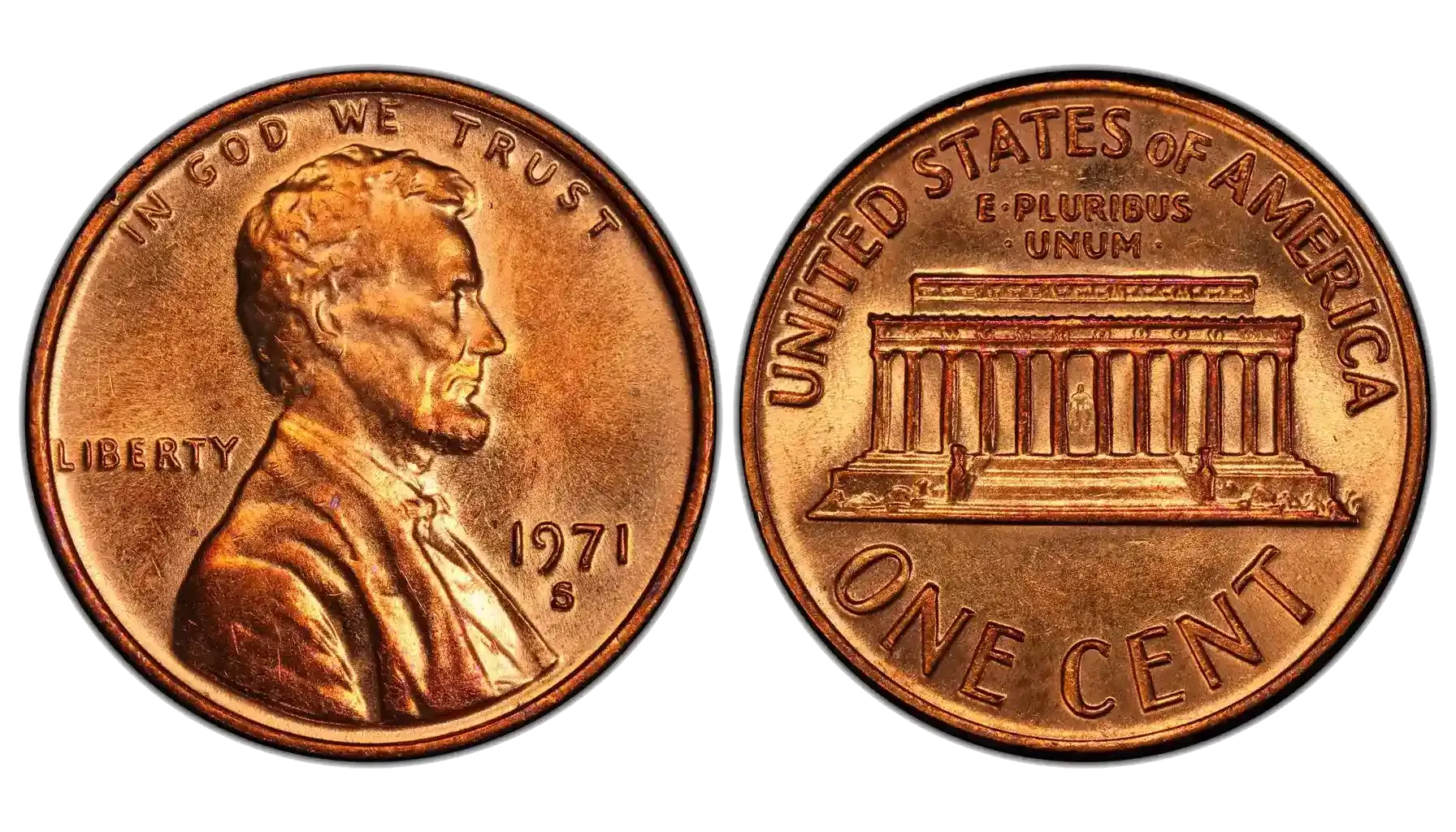
Mintage: 530,700,000
Weight: 3.11 grams
Size: 19.00 mm
Material: 95% Copper, 5% Zinc
Highest Auction Price: $1,000 (MS67+RD, 2020). The 1971-S penny usually has a medium value. San Francisco also made proof coins, which are shinier and more detailed.
Sometimes, the 1971 S penny error list can contain very unusual cases.
Market Penny 1971 S Value
Condition | Estimated Value |
Good (G) | $0.10 - $0.25 |
Fine (F) | $0.25 - $0.50 |
Extremely Fine (XF) | $1.00 - $2.00 |
Uncirculated (MS60-MS64) | $2.00 - $10.00 |
Uncirculated (MS65+) | $10.00 - $25.00 |
1971-S Proof
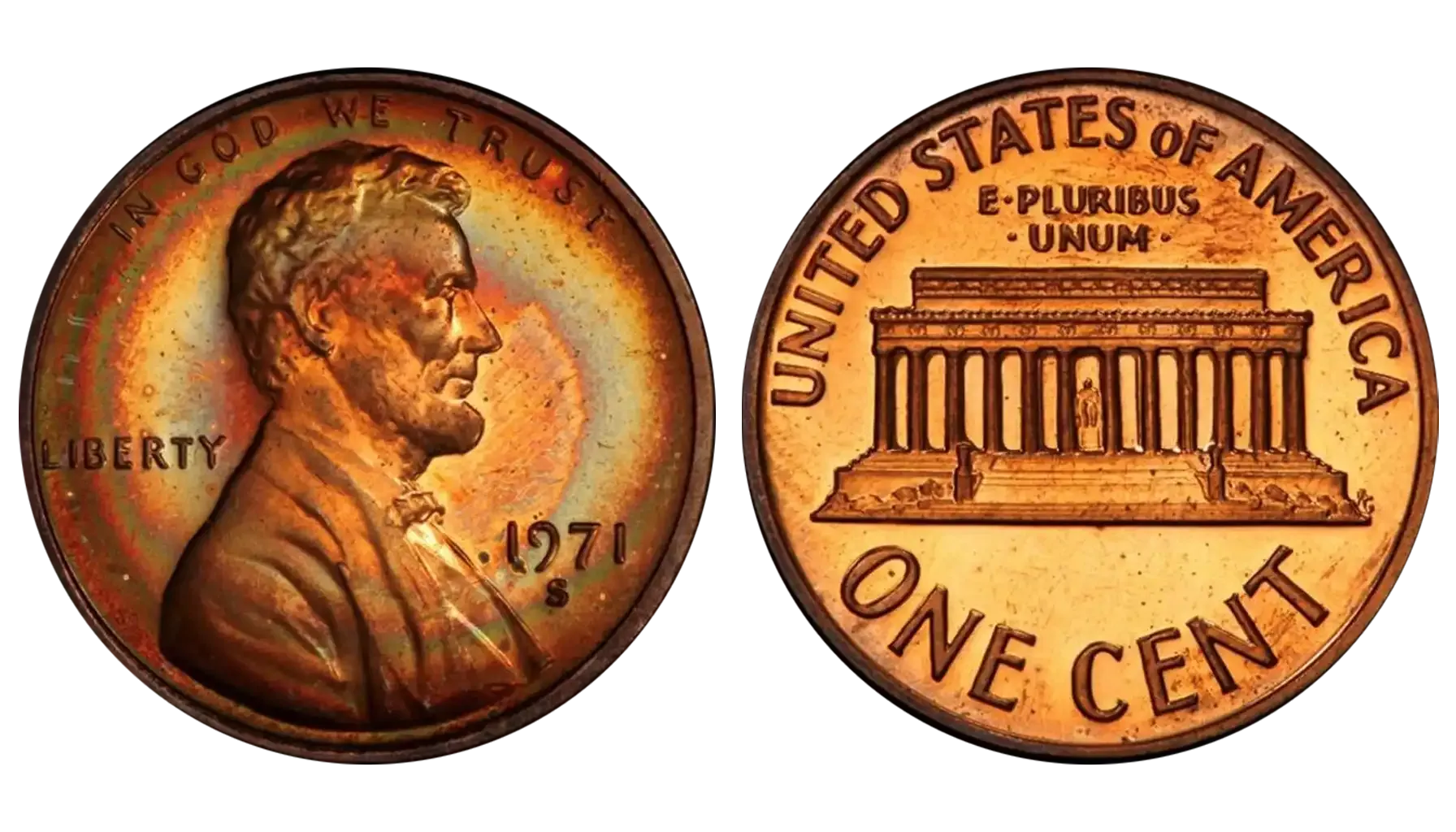
Mintage: 3,226,733
Weight: 3.11 grams
Size: 19.00 mm
Material: 95% Copper, 5% Zinc
Highest Auction Price: $1,000 (PCGS PR69DCAM, 2017). Proof coins are specially struck for collectors with polished dies and planchets, resulting in a mirror-like finish and sharp details.
Market Penny 1971 S-Proof Value
Condition | Estimated Value |
Proof (PR60-PR64) | $1.00 - $5.00 |
Proof (PR65-PR67) | $5.00 - $25.00 |
Proof (PR68-PR69) | $25.00 - $50.00+ |
Proof (PR70 DCAM) | $100.00+ |
1971 Penny Double Die Obverse (DDO)
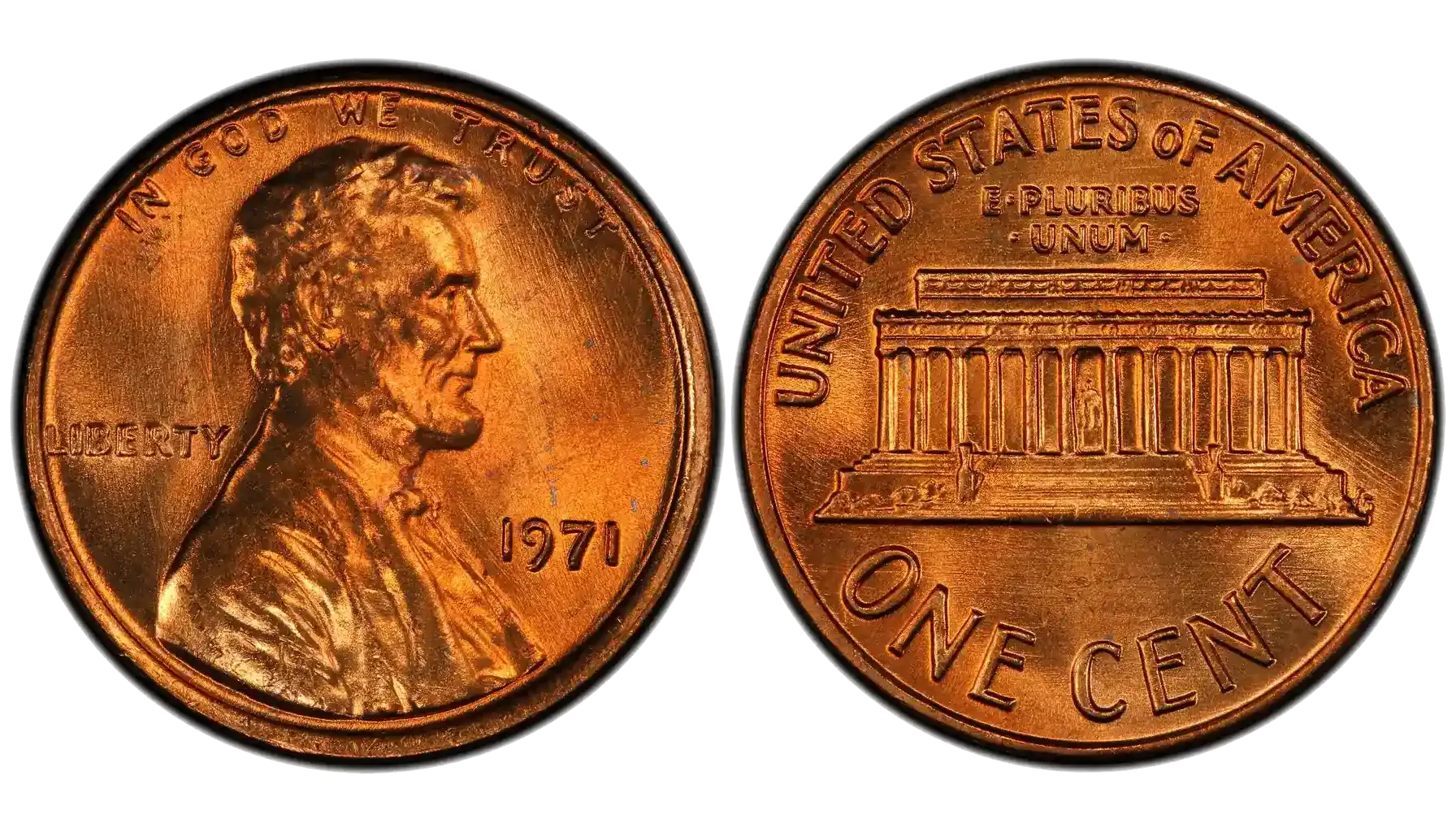
Mintage: Much fewer than regular coins (exact numbers are not public)
Weight: 3.11 grams
Size: 19.00 mm
Material: 95% Copper, 5% Zinc
Highest Auction Price: $4,500 (MS65RD, 2021). This error coin is very valuable. It is often called the 1971 Double Die penny.
Market Penny 1971 DDO Value
Condition | Estimated Value |
Good (G) | $50.00 - $150.00 |
Fine (F) | $150.00 - $500.00 |
Extremely Fine (XF) | $500.00 - $1,500.00 |
Uncirculated (MS60-MS64) | $1,500.00 - $3,000.00 |
Uncirculated (MS65+) | $3,000.00 - $5,000.00+ |
Key Errors and Varieties
Coin experts know that mistakes during making tokens can make them much more valuable. If you want a 1971 penny error list, these are key errors to look for.
Doubled Die Obverse (DDO)
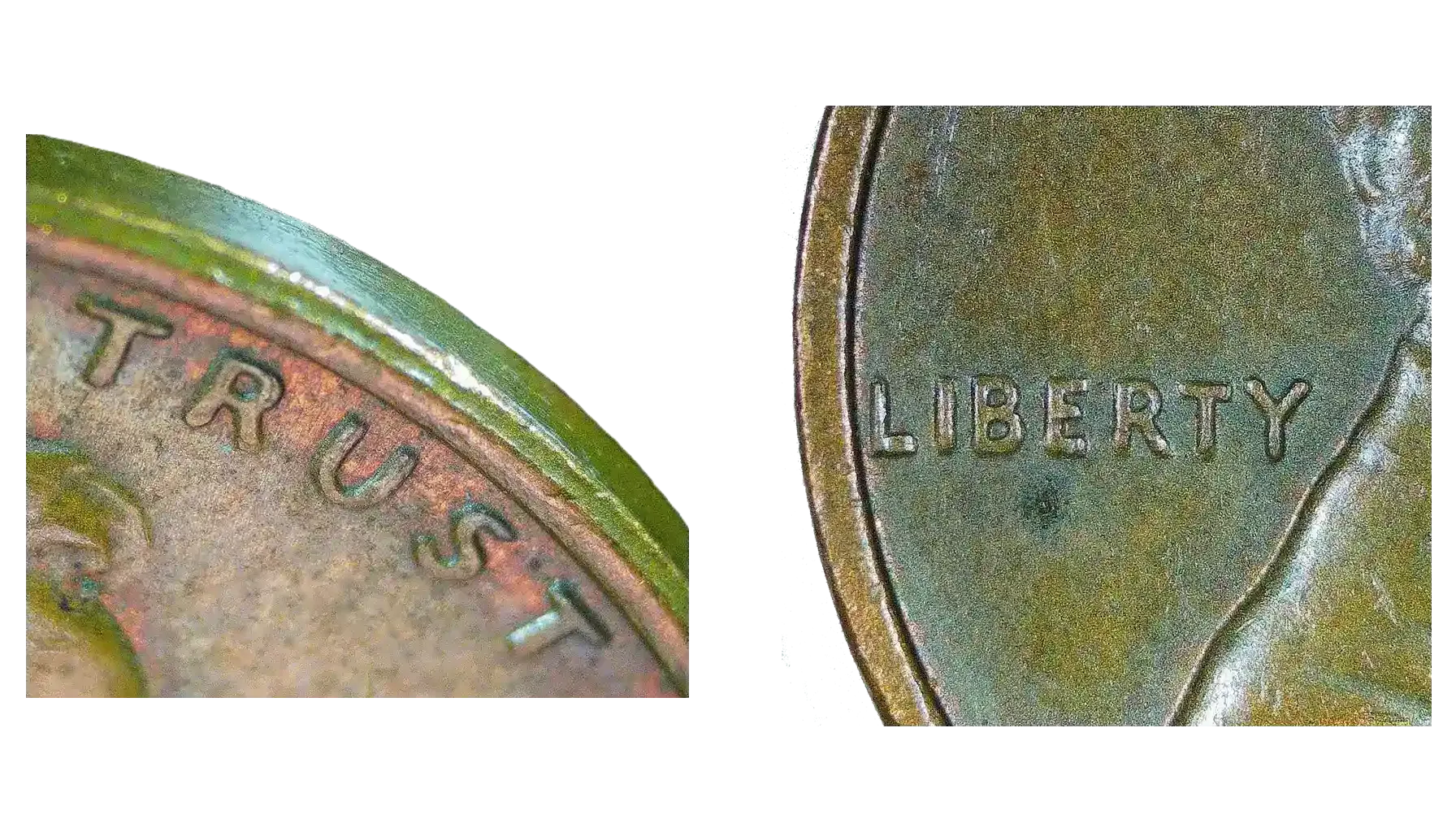
This is the most famous error for the 1971 Lincoln penny and for most valuable Lincoln cents at all. It happens when the die hits the blank slightly wrong. This makes parts of the design look doubled.
You might see clear double lines on the date, "LIBERTY," or "IN GOD WE TRUST." People often check a 1971 D penny error list to find these. Look closely at the numbers in the date and the letters.
Off-Center Strikes
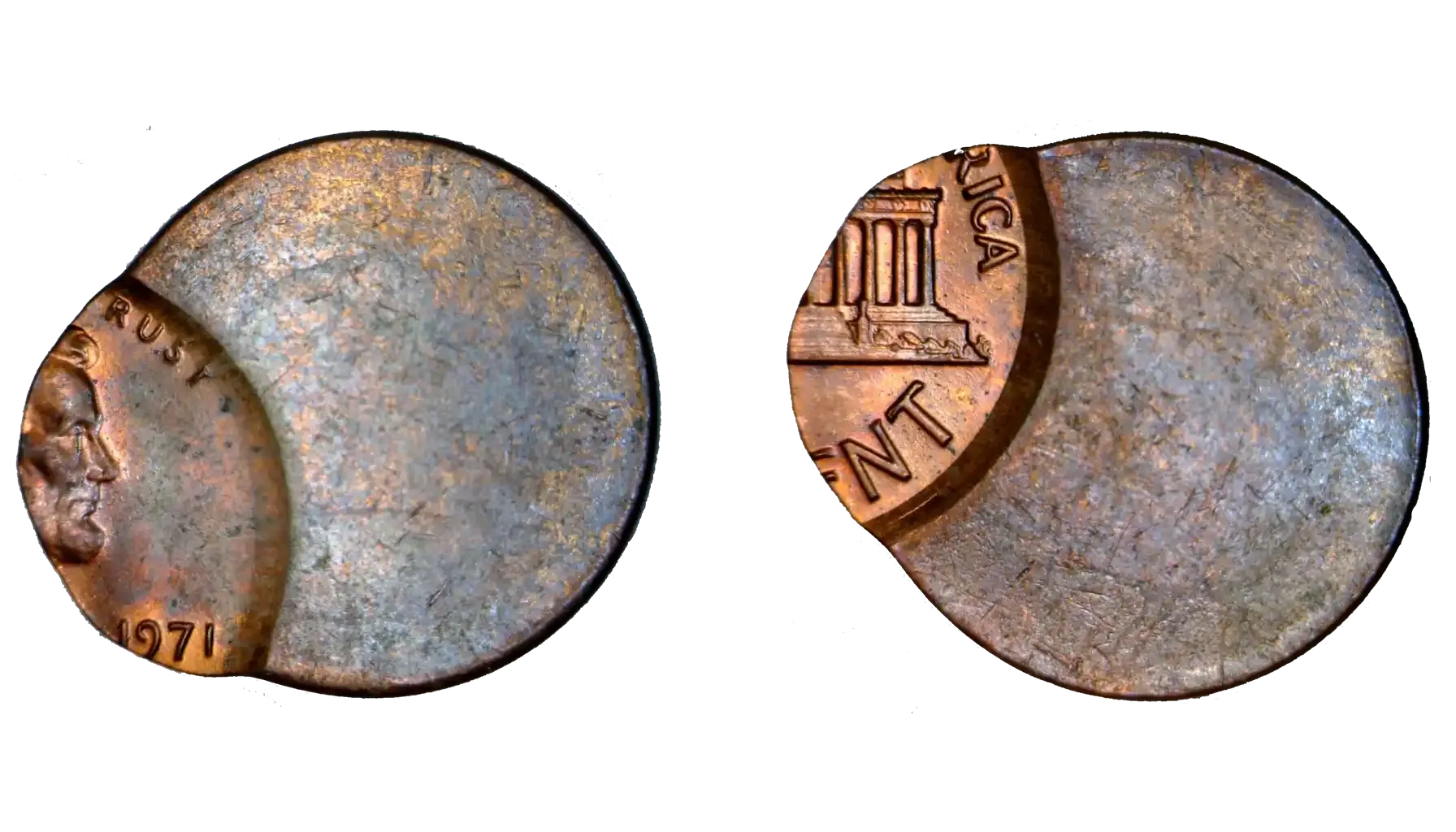
These errors happen if the blank is not in the middle of the press. Part of the design will be missing. You will see a blank curved edge where the coin was not struck. How much it is off-center changes its value. A coin that is very off-center can be worth more.
Cud Errors
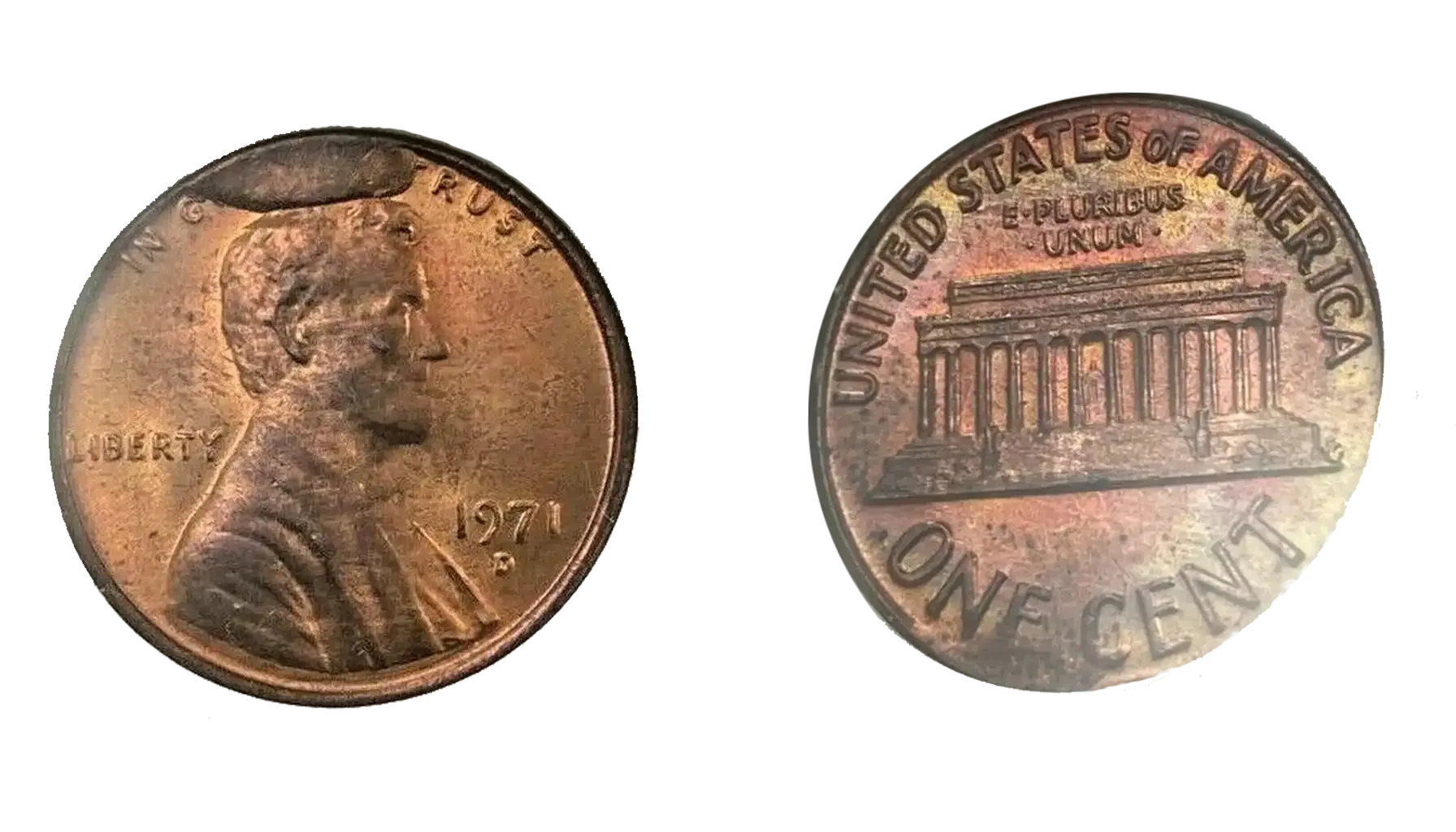
A cud is a raised lump of metal on the edge. It happens when a piece of the die breaks off. This broken part of the die leaves a raised, blank area. Cuds can be small or large.
Struck Through Errors
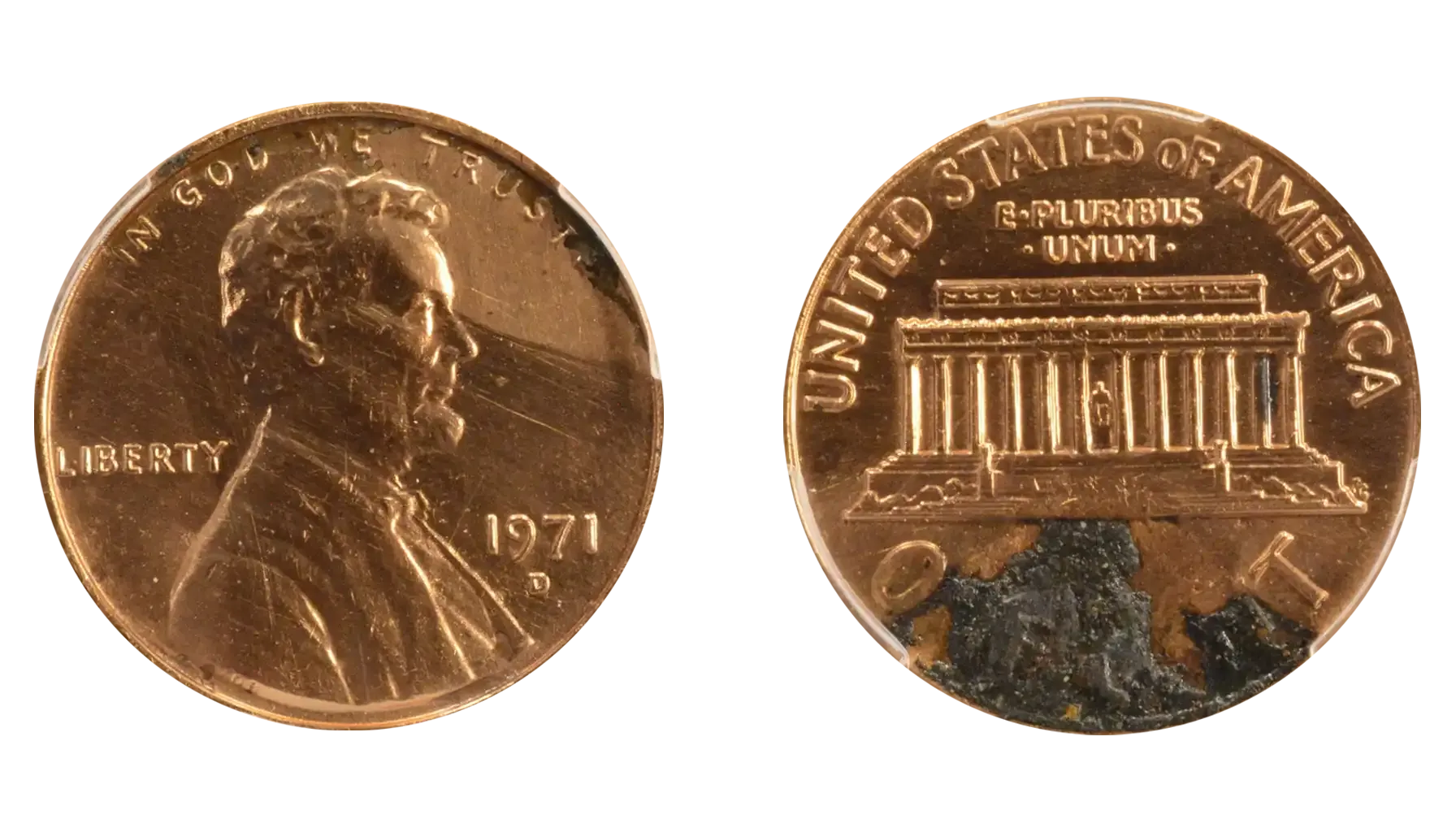
These happen when something small (like grease, cloth, or even another metal piece) gets between the die and the blank. It leaves a mark or impression.
For example, a "struck through grease" error might make parts of the design look weak or missing. These are some common 1971 penny errors.
Interesting Note: About the 1971 50 Cent Piece Value
While this guide focuses on the penny, some people also ask about other coins from 1971, like the Kennedy Half Dollar.
For example, the 50 cent coin value 1971 is often just its face value, 50 cents. However, like pennies, some 1971 half dollars can be worth more if they are in excellent condition or have rare errors.
Advice for Collectors
If you think you found a valuable 1971 penny, particularly a Doubled Die Obverse or another error coin, be careful. You need to handle it well and do more research. Here are some important tips:
Condition: An original look and shine are very important for its value. Small scratches, dents, or trying to clean it can make it worth much less. Always hold coins by their edges to avoid touching the surfaces.
Ones that have not been used, especially those graded MS-65 or higher, sell for the most money. This is because they look new and have their original shine.
Expert Check: For big finds, like a nice 1971 Doubled Die Obverse penny, it's best to get it checked by experts. Companies like PCGS or NGC, or apps like Coin ID Scanner, can tell you if your piece is real and what condition it is in.
This helps you get the best price and helps buyers trust you. Getting an item professionally graded can greatly increase its market appeal.
Keep Learning: The coin market changes. Always check new auction results and try to attend some coin shows in Tennessee, Michigan and other states.
There are many of them to stay alert. Look at prices from trusted dealers and updated price guides. Online forums and collector groups can also be good places to learn more and ask questions.
Final Thoughts
From the elusive 1971 Doubled Die Obverse to other intriguing errors and the meticulously crafted proof ones, these unique varieties elevate the humble cent into a captivating numismatic pursuit.
So, the next time you encounter a 1971 penny, remember: it might just be more than pocket change; it could be a piece of history with a story, and a value, waiting to be discovered.



